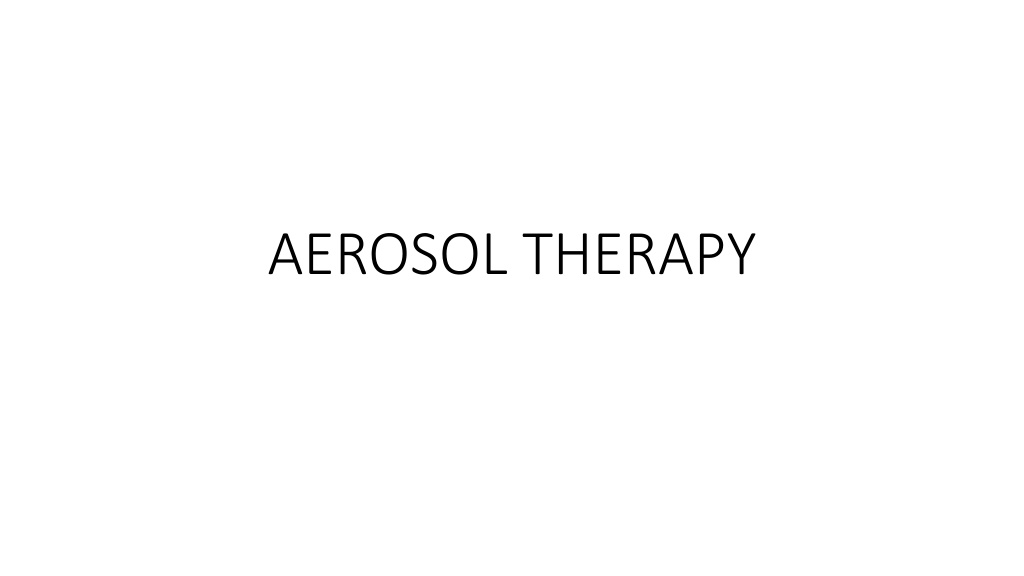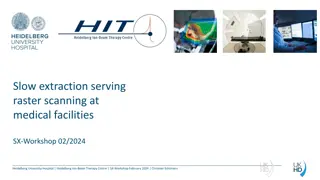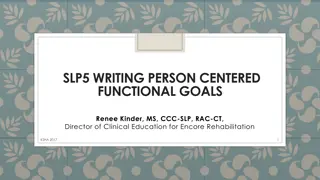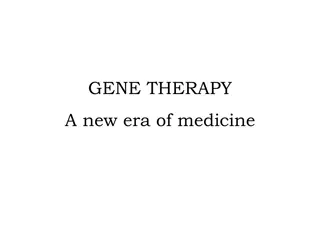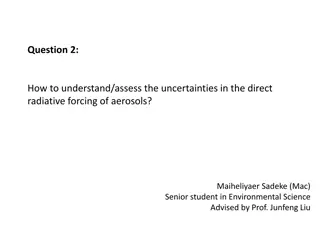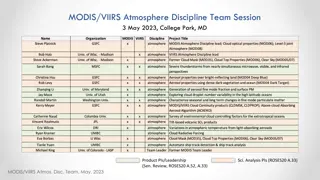AEROSOL THERAPY
Aerosol therapy plays a crucial role in managing respiratory diseases like asthma and COPD. It involves devices like pressurized metered dose inhalers (pMDIs) and spacers to deliver medication effectively to the lungs. This form of treatment is portable, efficient, and offers reproducible dose delivery, but it also comes with coordination challenges and potential drawbacks. Spacers can enhance drug delivery efficiency by optimizing lung deposition and reducing oropharyngeal particle deposition. Understanding the indications, advantages, and disadvantages of aerosol therapy devices is essential for effective patient care.
Download Presentation

Please find below an Image/Link to download the presentation.
The content on the website is provided AS IS for your information and personal use only. It may not be sold, licensed, or shared on other websites without obtaining consent from the author.If you encounter any issues during the download, it is possible that the publisher has removed the file from their server.
You are allowed to download the files provided on this website for personal or commercial use, subject to the condition that they are used lawfully. All files are the property of their respective owners.
The content on the website is provided AS IS for your information and personal use only. It may not be sold, licensed, or shared on other websites without obtaining consent from the author.
E N D
Presentation Transcript
AEROSOL THERAPY pMDI pMDI + Spacer pMDI + Spacer + facial mask DPI NEBULIZERS
Metered Dose Inhalers A metered-dose inhaler (MDI) is a device that delivers a specific amount of medication to the lungs, in the form of a short burst of aerosolized medicine that is usually self-administered by the patient via inhalation. It is the most commonly used delivery system for treating asthma, chronic obstructive pulmonary disease (COPD) and other respiratory diseases.
pMDI (pressurised metered dose inhaler) Indications for use: ability to follow instructions stable ventilatory pattern adequate inspiratory capacity (>900 mL) ability to mechanically coordinate actuation and breathing
pMDI procedure Shake canister, prime according to drug being used Place MDI between lips, mouth closed, tongue out of the way Exhale to end tidal volume Start inhaling slowly, actuate canister Inhale slowly to TLC 5-10 sec breath hold Exhale normally Repeat after 1 minute
pMDI - Advantages portable and compact efficient, reproducible aerosol dose delivery short treatment time no drug preparation or contamination some are breath-actuated
pMDI - disadvantages coordination and instruction required fixed drug concentrations,more actuations airway irritation from propellant may occur high oropharyngeal loss if spacer is not used environmental release of chloroflourocarbons Not all medications available
pMDI + Spacers - Indications for use Inhalation of drugs from an MDI: optimal lung delivery and minimizes oropharyngeal deposition Patients with poor hand-breathing coordination
Spacers Advantages increases time and volume to allow aerosol particle ageing which reduces particle size evaporation of propellant reduced oropharyngeal particle deposition removes the need for hand-breath coordination
Spacers Disadvantages large contamination some assembly increased treatment time
DPI - Dry Powder Inhaler Use: load dose/capsule as instructed exhale fully away from the device lips on mouthpiece inhale quickly repeat if powder remains in the device
DPI - Advantages small and portable short prep and admin times Breath actuated Less coordination Dose counter
DPI - disadvantages high inspiratory flowrate needed requires coordination to load capsule not all medications available
Nebulizers Indications: person unable to follow instruction for MDI poor inspiratory capacity cannot inspiratory hold rapid/unstable ventilatory pattern non-standard drug concentration/solution
Nebulizers Use: 3-5 mL, 6-8 L/min air flow < 10 mm. treatment time slow deep breaths, insp. hold if possible, but any breathing pattern is probably effective
Nebulizers - Advantages any drug solution, concentration or mixture, air or oxygen uncoordinated, very young, or in acute distress effective with low inspiratory flows or volumes inspiratory pause not required
Nebulizers - Disadvantages equipment is cumbersome and expensive longer treatment time requires cleaning, equipment contamination possible facemask gives a cold wet spray, face and nasal deposition requires compressed gas source (oxygen or compressor)
DRUGS Bronchodilatators ICS Adrenaline Mucolitics Antibiotics Saline Dornaze alfa
VENTOLIN (SALBUTAMOL) pMDI: 100ug/single inhalation dose Typical dosing: 3x2 inhalation + 2 inhalation if necessery Nebulizer 2,5mg/2,5ml
BERODUAL (FORMETREOL + IPRATROPIUM BROMIDE) Nebulizer 1 ml = 20 drops Dose: 1 drop/kg maximum: 40 drops (2ml) + 3ml 0,9% NaCl
PULMICORT, NEBBUD (BUDESONIDE) Nebulizer 250ug/2ml 500ug/2ml 1000ug/2ml
FLIXOTIDE (FLUTICAZON) pMDI 50 ug/inhalation dose 125 ug/inhalation dose 250 ug/inhalation dose
MUCOSOLVAN (AMBROSOL) Nebulizer: 7,5mg/ml
ADRENALINE 1-4 mg + 0,9% NaCl
